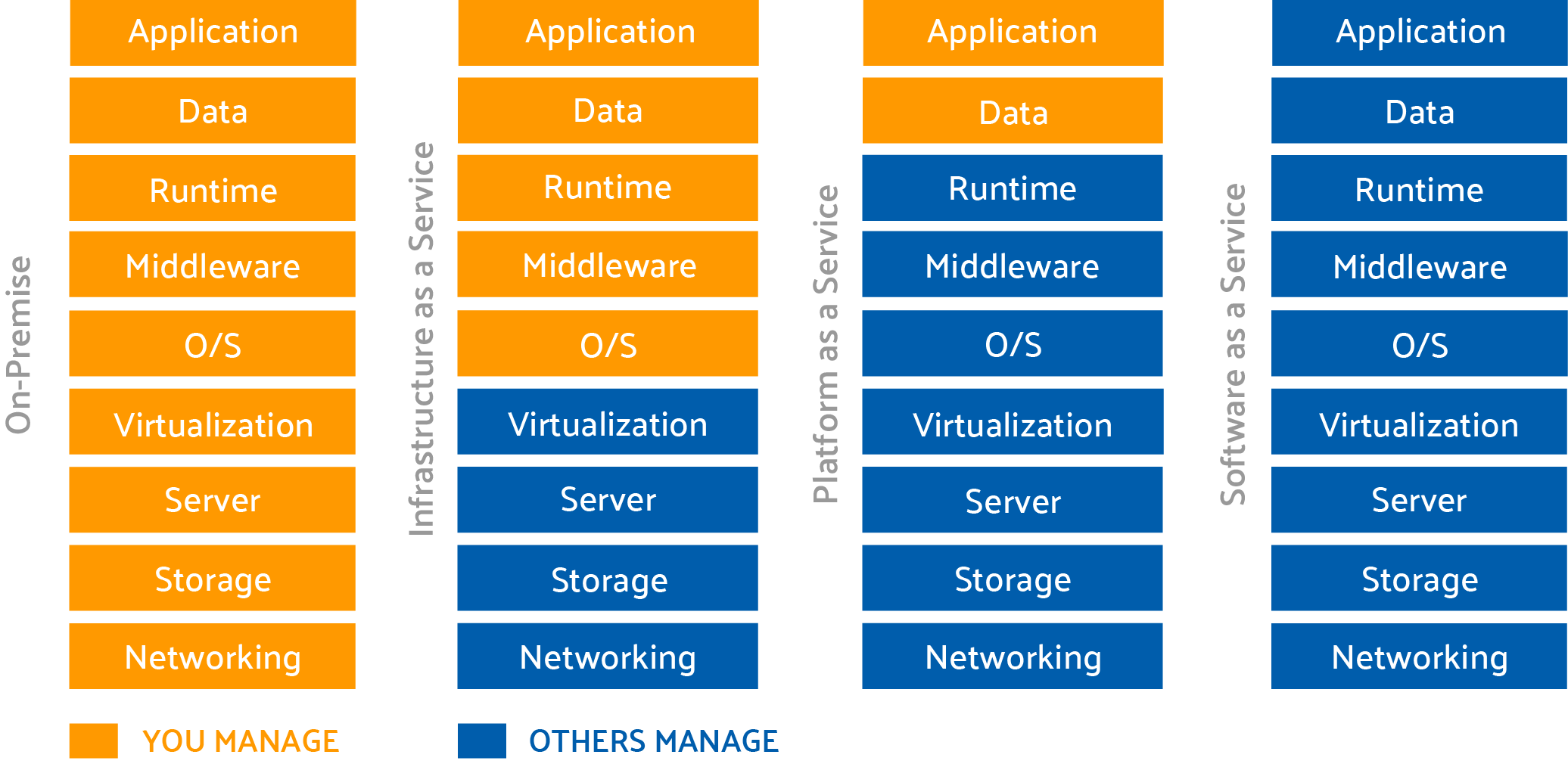Public cloud services will be essential for 90% of business innovation by the year 2022 according to Gartner. But what questions do you need to consider in order to make a move to the cloud? We have compiled a list of questions and answers to help you in this regard. Read on.
Why move to the cloud?
Many organizations are moving to the cloud. Here are the top reasons why!
- Competitiveness: The cloud’s usefulness in technology is now a given.
- Flexibility: Infrastructure capacity can be scaled as needed to meet the need of the application and user community
- Security: Cloud infrastructure is arguably more secure these days than more enterprises.
- Disaster Recovery: Recovery times can be measured in hours, not days. Here is more information on how it works on cloud.
- Automatic Updates: Automatic updates are built into service offerings.
What services can cloud computing provide?
 As you move from left to right, your provider does more for you and your information technology organization focuses more on your business objectives
As you move from left to right, your provider does more for you and your information technology organization focuses more on your business objectives
What to consider when moving to the cloud?
Are you considering moving to the cloud? Here are the things that you should think about before making the move:
- Strategy: Organizations should plan how to best exploit cloud technologies. Where and how will the enterprise consume cloud services? Where and how should the enterprise implement cloud environments? How will you secure, manage, and govern the cloud environment? How will the enterprise’s application strategy and architecture be impacted by cloud computing?
- Existing Staff Skillsets: It’s important to train teams in cloud technologies and services. Participation in strategy, planning, and execution will calm the fears of your IT staff.
- Vendor Role: There are vendors that can provide a number of services to help you make the move. Is your organization going to use one? And, if yes, what will vendors be responsible for? Vendors can provide assessments, plan and execute migrations, facilitate operations and maintenance, maintain software, and more.
- Lessons Learned: Moving to the cloud will be a learning experience. What mechanisms are you going to employ to capture and dispense knowledge and lessons learned?
- KPIs & Metrics: Before making the move to the cloud, organizations should consider how they are going to measure success. Measurements sometimes include cost savings, number of systems moved, time to provision, and service integration.
- Cost Management: Organizations should consider what governance model to put in place in order to manage costs and optimize services.
Where are the typical concerns of moving to the cloud?
According to Gartner, reliability, and integrity are no longer the show-stopping concerns that they were in the past. Of course, with any change, organizations will have concerns. Here are the top concerns from your peers:
- The top concern for most organizations is “is the cloud secure”? Arguably, the way that the cloud has evolved makes is more secure than some enterprises.
- Customers can only control and manage the applications, data, and services operated on top of that, not the backend infrastructure itself. Some cloud customers don’t like this perceived loss of control.
- If the proper governance isn’t established and followed, organizations may face increased expense. Governance is a key consideration that organizations must address.
- The cloud is innovating very quickly which is a challenge for some organizations.
- Organizations may find it difficult to migrate their services from one vendor to another if this is a need in the future. Cloud providers claim to be flexible, but with the amount of evolution in the cloud, it’s difficult to say how much of a challenge this may be in the future.
How is the cloud evolving?
The cloud is innovating and evolving exponentially. Here are some things that you should know about the evolution of cloud computing.
- The cloud is evolving quickly with up to 30 service enhancements/new services added monthly.
- The cloud can no longer be avoided when dealing with IT innovation; government applications and systems are being placed 100% in the cloud and adoption is accelerating.
- Industries are leveraging new disaster recovery technologies that can rebuild entire systems from scratch in a new location in under two hours.
- Benefit administration systems are optimizing costs by avoiding upcoming infrastructure refresh cycles after moving to the cloud. They are leveraging automation for build systems and security implementation.
- Organizations are utilizing more cloud provided services at significant costs savings.
- Hybrid architectures—deploying systems that exist both on-premise and in the cloud—are here to stay.
Cloud computing is evolving into an essential IT strategy from being an experiment some enterprises conducted. Where are you in your cloud strategy?
Reach out to us if you want more information on how can take the first step to become cloud-savvy.

